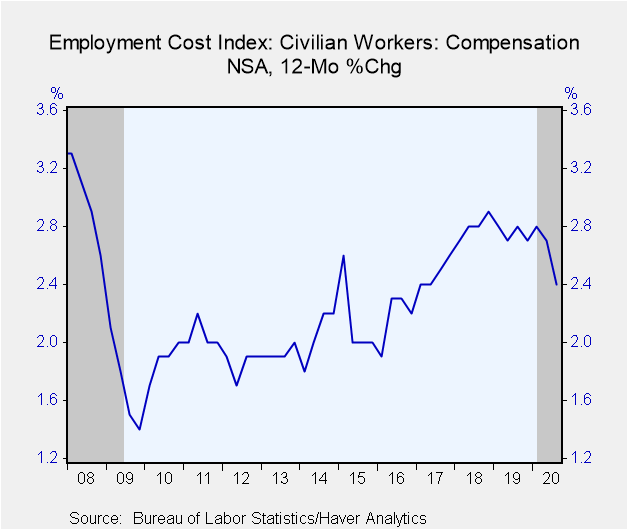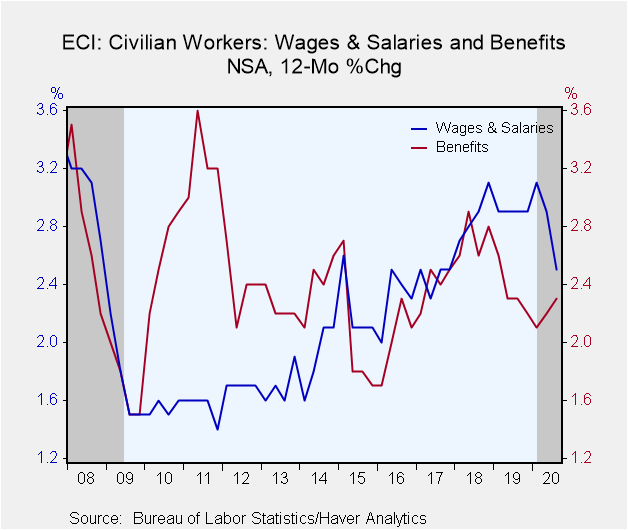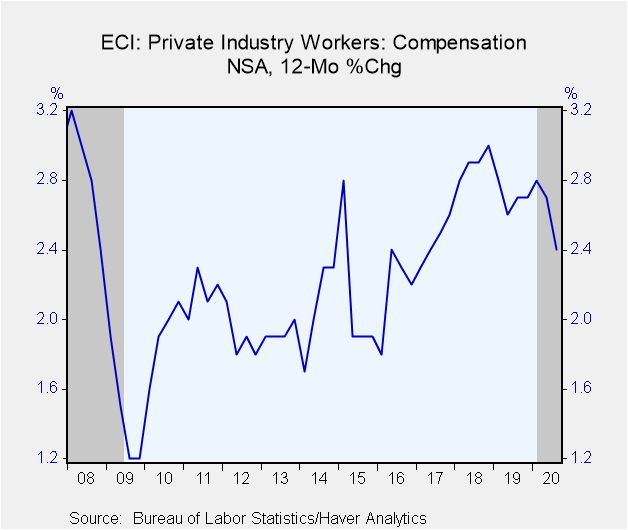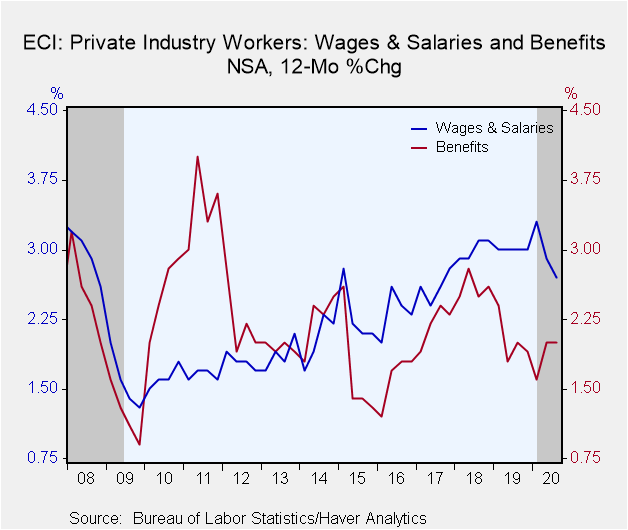 Global| Oct 30 2020
Global| Oct 30 2020Employment Cost Growth Decelerates to Three-Year Low
Summary
• Overall compensation increased 0.5% in Q3 with year-on-year growth slowing to 2.4%. • Wages and salaries up 0.4% (2.5% y/y) while benefits gain 0.6% (2.3% y/y). The employment cost index (ECI) for civilian workers rose 0.5% in the [...]
• Overall compensation increased 0.5% in Q3 with year-on-year growth slowing to 2.4%.
• Wages and salaries up 0.4% (2.5% y/y) while benefits gain 0.6% (2.3% y/y).
The employment cost index (ECI) for civilian workers rose 0.5% in the third quarter of 2020, in line with expectations from the Action Economics Forecast Survey, and the same increase as Q2. Year-on-year growth of total compensation decelerated to 2.4% in Q3 from 2.7% in Q2. This is the slowest year-on-year growth in three years. Compensation growth was 2.8% y/y in 2019Q4; the cycle high was 2.9% in 2018Q3.
Wage and salaries increased 0.4% in 2020Q3 (2.5% y/y), a deceleration from the 2.9% y/y gain in Q2 and 3.1% in Q1, which was the cycle high. Benefits grew 0.6% (2.3% y/y), a slight acceleration from the second quarter's 2.2% y/y growth. Benefits increased 2.1% y/y in Q1, the slowest growth since the end of 2016.
Private sector compensation, wages and salaries, as well as benefits showed a similar pattern to all civilian workers (see table and graphs below). Compensation in both goods-producing industries grew 0.3% in Q3 (2.2% y/y), a significant slowdown from the 2.8% y/y growth in the Q2. Service-providing workers experienced less deceleration with compensation up 0.5% in the quarter and year-on-year growth of 2.5% down from 2.7%. Overall pay for non-incentive paid occupations increased 0.6% (not seasonally adjusted) and 2.4% y/y, down from 2.6% y/y in Q2.
The employment cost index, which measures the change in the cost of labor, free from the influence of employment shifts among occupations and industries, is available in Haver's USECON database. Consensus estimates from the Action Economics survey are in Haver's AS1REPNA database.
Gerald D. Cohen
AuthorMore in Author Profile »Gerald Cohen provides strategic vision and leadership of the translational economic research and policy initiatives at the Kenan Institute of Private Enterprise.
He has worked in both the public and private sectors focusing on the intersection between financial markets and economic fundamentals. He was a Senior Economist at Haver Analytics from January 2019 to February 2021. During the Obama Administration Gerald was Deputy Assistant Secretary for Macroeconomic Analysis at the U.S. Department of Treasury where he helped formulate and evaluate the impact of policy proposals on the U.S. economy. Prior to Treasury, he co-managed a global macro fund at Ziff Brothers Investments.
Gerald holds a bachelor’s of science from the Massachusetts Institute of Technology and a Ph.D. in Economics from Harvard University and is a contributing author to 30-Second Money as well as a co-author of Political Cycles and the Macroeconomy.









